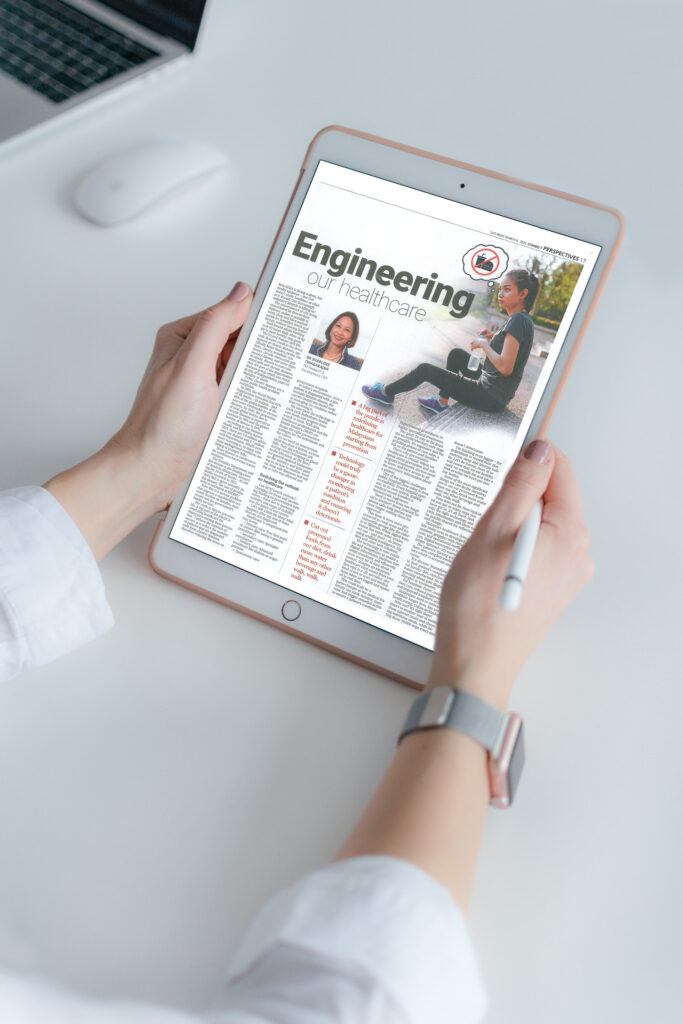MALAYSIA is facing a silent, but deadly epidemic—one that doesn’t make headlines as often as it should. Our increasingly sedentary lifestyle is killing us!
The conveniences of city living exacerbated by door-to-door delivery, makes it possible to work, shop and have mamak meals for breakfast, lunch and dinner without leaving home!
Desk-bound adults working over 10 hours daily often struggle to meet healthy step goals.
The United Nations said lifestyle diseases result in the development of chronic diseases, specifically heart disease, stroke, diabetes, obesity, metabolic syndrome, chronic obstructive pulmonary disease, and some types of cancer. Known as non-communicable and chronic diseases, they are part of the degenerative diseases group which can result in loss of independence, years of disability or death.
Today, chronic diseases are a major public health problem worldwide.
In 2005, the World Health Organisation estimated that 61% of all deaths – 35 million – and 49% of the global burden of disease were attributable to chronic diseases. By 2030, the proportion of total global deaths due to chronic diseases is expected to increase to 70% and the global burden of disease to 56%.
According to our National Health and Morbidity Survey 2023, there are 3.6 million adults who are diabetic, 6.7 million with hypertension. What’s even more worrying is, so many with these undiagnosed conditions are hitting at younger folks.
Heart disease or cardiovascular conditions have even scarier numbers.
The Statistics Department said this disease is the leading cause of death in Malaysians, accounting for 18.4% of deaths – 95,266 deaths recorded in 2022. “RM3.9bil is spent annually on this disease. The loss of productivity is estimated at RM4bil.”
Now this is a serious problem that imposes a considerable economic burden on families, businesses and the government’s health services.
The truth is, they’re preventable. A big part of the puzzle is redefining healthcare for Malaysians starting from prevention. I believe the measure of success is to reduce the number of patients that are diagnosed with these chronic diseases therefore reducing the stress on government hospitals.
In today’s environment, once a patient is diagnosed with a preventable lifestyle disease, the current healthcare model looks at managing the condition rather than reversing it.
We now have the technology to track each individual’s healthcare needs and progress from womb to tomb. With data, healthcare professionals and Health Ministry (MOH) can design the right preventative strategies for the individuals and the nation.
So, we need an intervention. MOH has done it before, successfully. They did a fantastic job during Covid-19 keeping us glued to the television, as the director general updated Malaysians on the statistics, and later guiding us on how to sanitise, mask up, keep safe distances and telling us who was allowed out!
Switching the outlook on healthcare
Can MOH switch outlooks?
Changing the focus and increasing funding on preventative initiatives – from diet to increasing mobility and range of mobility into the fabric of our society.
Let’s talk a little bit about what happens after any one of these diseases are diagnosed. Healthcare is categorised into four levels:
• Primary care – Your first point of contact (like seeing a general practitioner).
• Secondary care – Specialist consultation.
• Tertiary care – Advanced treatments like dialysis or angiogram
• Quaternary care – Experimental procedures or highly specialised treatments
The goal? To stay as far from the secondary/tertiary care stage as possible. It’s expensive and the gruelling phases of care takes a toll on the patient and families.
That’s why preventative healthcare is crucial. When we speak about prevention and subsequent treatments, doctors need to know and have access to all the necessary information about a patient.
One of the biggest challenges public hospitals face today is data accessibility. Every hospital operates on its own system, making medical record transfers a bureaucratic nightmare.
Need to move from one hospital to another? Brace yourself for phone calls, long queues, and even longer waiting times for approvals
This issue is even more pronounced in rural areas and for vulnerable groups like the elderly or illiterate. While digital innovation has made some strides, we can—and must—do better using artificial inteligence, big data and other tech solutions.
The technology is now available and inexpensive to enable a digital information platform that could seamlessly and efficiently store every bit of data about a patient. Imagine an electronic healthcare card where from your first visit to a GP, specialist, any kind of test or scan and medications taken are logged and updated in real time.
This could truly be a game-changer as the medical fraternity can track, monitor, intervene and trigger remedial actions to ensure a patient’s condition doesn’t deteriorate.
I’m thinking even bigger – for individuals to record their diet, exercise, sleep and lifestyle habits. Let’s be honest, most of us will swear that we eat healthy, until we actually list and take a look at what we have put into our bodies.
Some of the most significant things we can do for ourselves are to cut out processed foods from our diet, drink more water than any other beverage and walk, walk, walk.
Data does not lie. How hydrated you are or many steps you have got in, it’s all there. And with the right technology and tools, information and alerts can be quickly shared for reflection and change.
Malaysia’s healthcare system, like many even in developed markets, grapples with rising costs and operational inefficiencies. Digital innovation is no longer optional—it’s essential.
For patients: Having access to their own complete medical history which is accurate and recent
For doctors: Immediate access to their patient’s complete medical history, diet, exercise and habits summarised. No more guessing about past diagnoses, allergies or treatments.
For hospitals: Faster, more efficient care, reduced paperwork and improved treatment accuracy.
Malaysians need to embrace healthier longer lives. Say yes to health eating. Utilise technology.
Why not? It’s right there!
Here’s to another year of making those calories count and choosing nutritious meals, while hitting those 10,000 steps every day!
——————————————————-
This article was first published in the StarBiz 7, Issue Mar 8 2025: A blueprint for sustained dividends
To access the PDF version, Click Here
To read the full Star epaper: Click here


